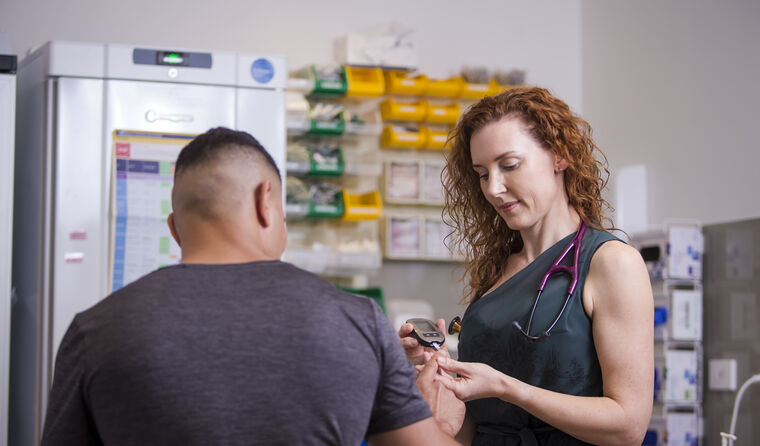News
Preventable chronic diseases need ‘urgent’ intervention
Alarming new research shows the socioeconomic health gap is widening, leaving GPs to navigate systems that ‘do not account for complexity’.
 More than 10 million Australians live in the 40% of communities with the highest levels of disadvantage.
More than 10 million Australians live in the 40% of communities with the highest levels of disadvantage.
In the four years between 2017 and 2021, more than 125,000 Australians aged between 30 and 70 died from preventable diseases – 71% of those were living in the most disadvantaged communities.
That is the stark reality of Australia’s healthcare system, according to new research reinforcing that where you live determines the state of your health.
On Tuesday, Victoria University launched Australia’s Health Tracker: Chronic Conditions by Socioeconomic Status, finding a strong association between chronic disease and premature death and socioeconomic status.
It found that in areas of disadvantage, cancer rates are twice as high, diabetes cases are three times higher, chances of developing heart disease or having a stroke are twice as likely, and lung disease is three times higher.
‘Those experiencing high levels of disadvantage do not just have more chronic disease – they are much more likely to die early from a chronic condition,’ the report states.
Dr Suzanne Williams is a GP at Brisbane’s Inala Primary Care medical centre, serving a community with high levels of disadvantage and complex healthcare needs.
At the clinic, 20% of patients have diabetes, 30% are smokers, and half are on five or more medications.
Dr Williams said that, as a GP, it remains challenging to navigate healthcare systems that do not account for complexity.
‘In my practice, many patients with high mental health needs and complex medical conditions often require interpreters, and they need more time to reach the same healthcare outcomes,’ she said.
‘Improving health outcomes starts with engaging communities – giving them hope and empowering them to take control of their health.
‘Being healthy is expensive and the system is hard to navigate … access to health also needs to be easier, not just in an emergency but before with greater allied health support.’
The report found that almost half of Australians have a chronic disease, and that one third of people living in the most disadvantaged areas have two or more chronic conditions, compared to one in eight of those living in the least disadvantaged areas.
It said one third of the burden of disease could be prevented by reducing risk factors such as smoking, physical inactivity, poor diets, and alcohol consumption.
Inala Primary Care CEO Tracey Johnson said the solution to the health divide is not about more money or higher taxes, but ‘using resources smarter’.
‘Currently, funding barely covers direct care, especially in general practice,’ she said.
‘Our communities endure poor health for over a decade before dying younger than they should, robbing them of a fulfilling later life.
‘Clinicians in disadvantaged areas are stretched thin, often working in isolation with limited support.’
In response, the report has made 10 calls for change to urgently address the growing issue, including establishing a national framework and fund for local collaboration and coordination of place-based initiatives, and long-term funding.
It also wants to see investment into prevention through improving health literacy, and a reduction in financial access barriers in rural, remote and disadvantaged areas.
RACGP Specific Interests Poverty and Health Chair Dr Tim Senior told newsGP there is an urgent need to put a ‘socioeconomic deprivation lens on our health planning’.
‘I work in one of the most socially deprived communities, certainly in New South Wales, and that picture looks really familiar in terms of the range of chronic diseases that we’re seeing all the time,’ he said.
‘It’s rare that anyone just has one of those chronic diseases, so we’re seeing complex multimorbidity, we’re seeing people with cardiovascular disease, diabetes, chronic obstructive pulmonary disease and mental health problems.
‘This is why we see the gap widening, because we haven’t had a socioeconomic lens on any health policies for 20 years.’
Dr Senior said GPs must be equipped with the time, funding, and resources to be a part of the community and appropriately manage their patients.
‘It’s partly that policy makers, by definition, are in relatively well-paid work, so they’re not living in those deprived communities,’ he said.
‘They need to be able to hear from people living and working in those deprived communities about their experiences, that’s going to be crucial.
‘There has to be action because there’s a crunch coming in terms of medical and health workforce, health services and systems to help with that, but also people being too unwell to work and requiring support.’
Log in below to join the conversation.
deprivation health disparities poverty rural and regional socioeconomic status
newsGP weekly poll
Which of the following areas are you more likely to discuss during a routine consultation?